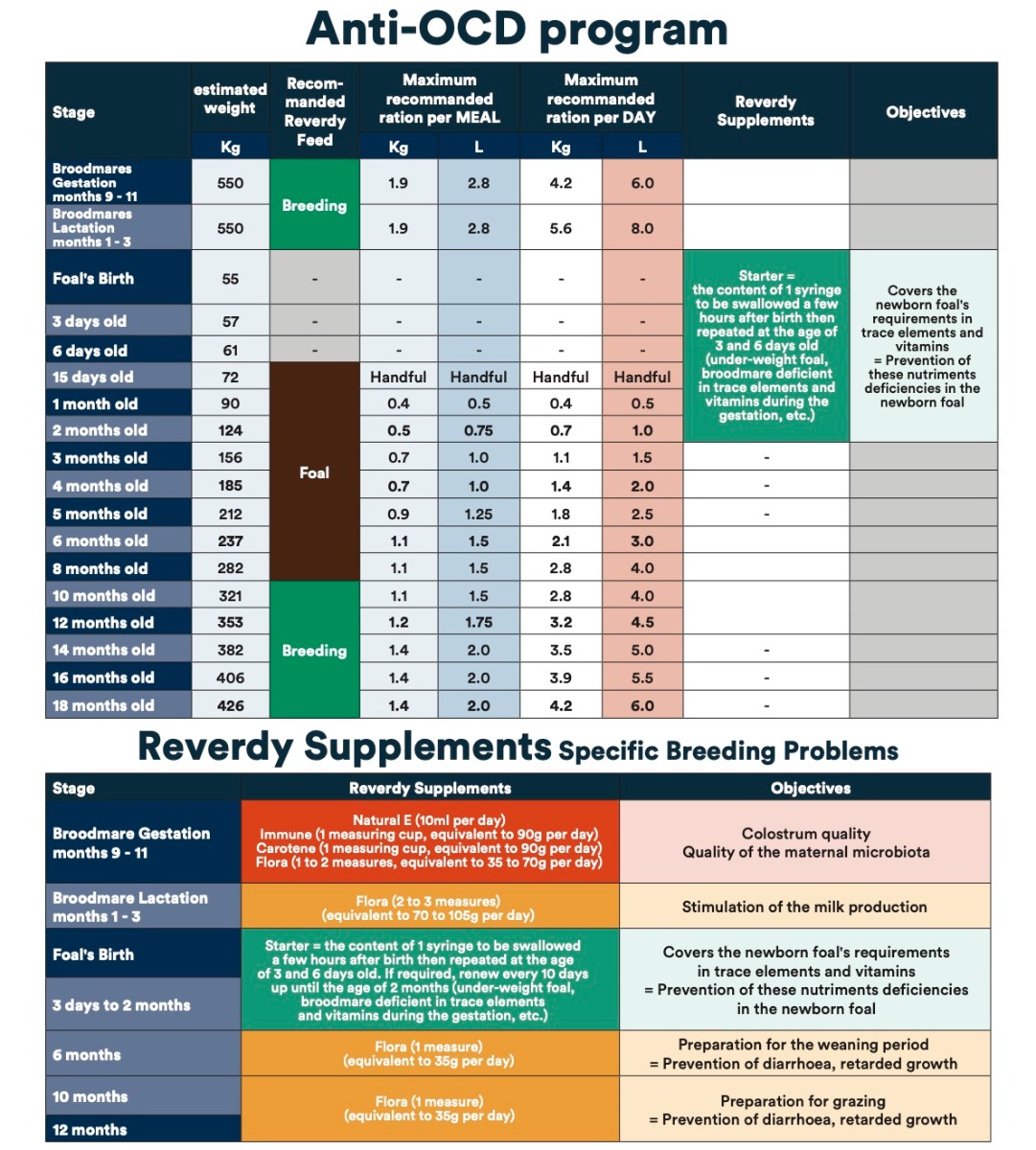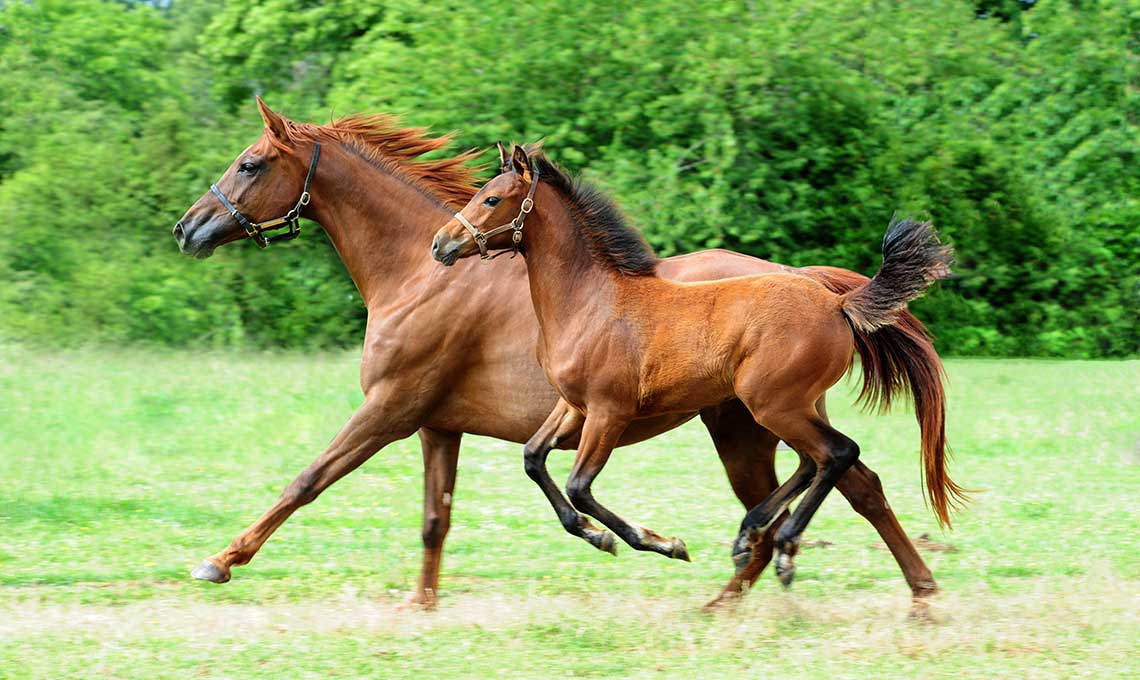How can osteochondrosis be controlled in the foal?
L’Osteochondrosis is a multifactorial disease. This means that there are many factors that come into play such as genetics and the foal’s living conditions. For example, foals having moderate and regular activity (walking) are at less risk of developing osteochondral lesions than foals confined to stables or the opposite than those undertaking regular sustained work even if controlled (ex: pre-breaking).
In the same way, the diet of brood mares and youngsters is primordial to ensure optimal growth and development and thus guard against the onset of osteochondrosis. To that end, it is advisable to:
- Avoid mineral deficiencies, especially in copper (requirements of a growing foal = 20 to 30 mg per kg of ingested dry matter) and calcium, two very important elements for skeletal growth. That doesn’t mean that the supplies of phosphorus and zinc must be neglected. To do this, it is vital to provide these minerals in a balanced way: the phosphocalcium ratio (calcium/phosphorus) should be situated at around 2 and the zinc/copper ratio at around 3.
- Curb excess carbohydrates (starch/sugars). That’s why it’s essential to favour the feeding of forage to the detriment of cereals which are rich in starch. Furthermore, technological treatments undergone by cereals such as flaking and “puffing” improve digestibility of the starch and thus lead to an increase in the absorption of sugar (glucose) in the blood (= glycaemia) after meals. This is equally the case of foods high in simple sugars, such as molasses. Numerous scientific studies studies have shown that a high increase in the glycaemia in broodmares and foals following feeds was very closely correlated to the development of the disease. For this reason we recommend avoiding flaked cereal based feeds containing molasses, and also to restrict the starch content of each feed to a maximum of 100g/100kg of bodyweight, that is to say 0.5L (0.35kg) of Breeding per 100kg of bodyweight.
- Limit energy excesses. Dispensing too much energy to broodmares can make them obese: a gestating mare does not need to eat for two, she above all needs a diet perfectly adapted to the needs of the future foal. In the same way, feeding too much energy to foals contributes to accelerating their growth. Now, too rapid growth will be made to the detriment of skeletal strength: bone cannot grow quickly and correctly at the same time! Obesity of the broodmare and too rapid growth of the foal are equally associated with the development of osteochondrosis. It’s therefore recommended to control the amount of energy provided, by watching body condition and ideally the evolution of the mare’s and the growing youngster’s weight by regular weighing (every 15 days).
Providing your foal with the best possible living conditions, is to ensure good health when he becomes an adult. And this involves in particular a balanced and adapted diet from the gestation of the mare. The Reverdy breeding range has been developed to optimally cover the needs of growing broodmares and foals. You will find below the feeding program that we recommend in order to limit the development of osteochondrosis in your breeding. In addition to the feeds and supplements recommended below, it is important that your horses have unlimited quality haygrass as well as clean water and a pure salt stone. Likewise, during the grazing season, the rations presented below should be reduced or even discontinued temporarily as long as grass is abundant.
Cyrille DAVID, Docteur Vétérinaire.
REVERDY Nutrition Équine, Département Recherche & Développement, Juvigny les Vallées, France





